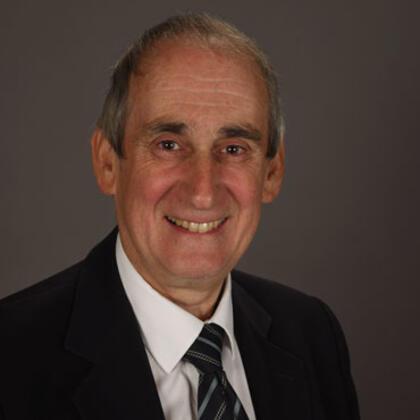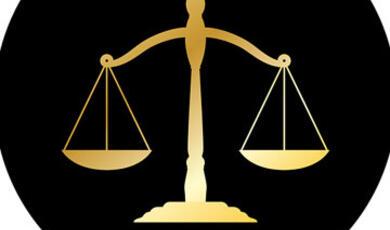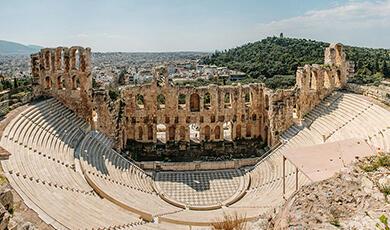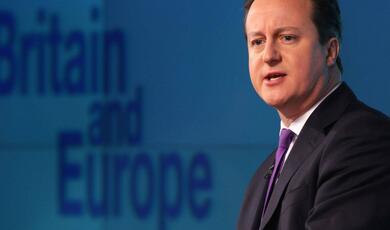Brazil: Order and Progress - An Introduction
Share
- Details
- Text
- Audio
- Downloads
- Extra Reading
The symposium will look at the country's rapidly developing economy and place in the world in the context of its history, geography and politics. Current events and issues will be considered at a time when attention has been focused on the country through the World Cup and the Olympics.
Download Text
Brazil: Order and Progress
An Introduction
Professor Tim Connell
[PIC1 The Eye]
Why should we look at Brazil in particular, apart from the fact that it is the B in BRICs? (And we are now on to the MINTs and CIVETS as countries for future growth and development.[i]) I think a Symposium on Brazil is timely as it is a country which is coming to the fore not only as a major emerging economic and regional power but also because of the World Cup and Olympics. It is also a country which lends itself rather to stereotype with Carnival, Football, the Samba, Caipirinha and Cachaça, and exotic animals in the Amazon, whereas it is actually somewhere that rewards more detailed study as it is quite unique in so many respects.
[PIC2 Carnival & Animals]
Brazil of course is a country that also lends itself to superlatives:
It is the world's fifth biggest country, covering an area much larger than Western Europe and slightly bigger than the United States (excluding Alaska). It has the 9th biggest economy in the world in terms of Gross Domestic Product (GDP) and, with perhaps 200 million people now, it is the world's fifth most populous country after China, India, the United States and Indonesia. More than 80% of Brazilians live in urban areas (São Paulo is the biggest city in South America) but there is also an indigenous Indian population of around 450,000.
[PIC3 São Paulo and Indians.]
It is estimated that Brazil contains greater biodiversity than any other country on Earth and the River Amazon (most of which lies inside Brazil) is arguably the longest in the world, at 4,225 miles, which is about 90 miles longer than the Nile). Brazil is the world's largest exporter of sugar, coffee, orange juice, soya, beef, tobacco and chicken. In terms of agriculture the Financial Times describes the country as "a powerhouse whose size and efficiency few competitors can match". [ii]
This is a country with a longstanding nuclear industry, based on its major deposits of uranium. The tenth largest consumer of energy in the world, it has enormous hydro-electric power and future potential, with the massive Itaipú dam a case in point.[iii]
[PIC4 ITAIPU]
But whilst it may well have one fifth of the world’s fresh water, the North East is struck by perennial drought, making the sertão and the sertanejos who live there almost legendary in Brazilian folklore. So far, so good. But despite the perennial optimism of the Brazilians (“Brazil is the country of the future” – to which the more jaundiced observer replies, “But it always will be”…) there are still problems and contradictions to be faced.
[PIC5 DILMA]
Dilma Rousseff, Brazil’s first woman president who came to power in 2011 with 56% of the vote, is facing increasing criticism over scandals which involve the state oil company Petrobrás in particular, and that is an issue close to her as she (and many of her associates) are former directors or employees. The mensalão scandal (monthly payoffs to members of Congress) shows little sign of going away as the former President Inácio Lula da Silva is now implicated.[iv]
[PIC6 DEMO – NUNCA MAIS]
The truth commission, set up in 2011 to investigate human rights abuses during the period of military dictatorship, is bound to cause embarrassment.[v] The economy is slowing down from a high point of a 7.5% annual growth rate to ticking over now. Demonstrations against the extravagance relating to the World Cup and Olympic Games have damaged the government’s standing, as well as the inevitable accusations of corruption and incompetence and calls for major improvements in public health and education. Things are hardly helped by the state of the water where the Olympic aquatic events are due to take place.[vi]
The virtual warfare between police and drug barons in the favelas is a constant cause of concern, as is the number of people who are allegedly killed by the police each year.[vii] Enormous steps have been taken to protect the flora, fauna and environment of the Amazon basin (though Brazil did not support recent UN proposals to outlaw deforestation). And yet talks are ongoing with China to build a railway from the new port of Açu just north of Rio de Janeiro, right across to the Pacific coast of Peru[viii], which will/would go through major nature reserves and inevitably have a major impact on the ecology and the environment.[ix]
So, a fairly complex picture which we will hope to unravel in the course of this afternoon.
[PIC7 Caravel, Carrack and Pieces of Eight]
But let’s start with some basics. Where does Brazil as a state actually come from? During the age of European Expansion the Pope drew a line vertically down the map, and awarded new discoveries to the East of this line to Portugal and West of the line to Spain. The Treaty of Tordesillas, signed in 1494, was designed to prevent rivalry and possible conflict between the two in the light of the Portuguese voyages to the Indies and the new discoveries made by Columbus who, oddly enough, touched in at Lisbon before going on to Seville after his first voyage. It was not until Magellan’s voyage in 1521 that it was realised that there could be a problem as his claim on islands in the Pacific could arguably have been West of the Tordesillas Line going one way – and East going round the other.[x] And ironically Magellan was known to his mother as Fernão de Magalhães but was in the employment of the King of Spain.
Either way King João II of Portugal might have felt himself short-changed in the light of the wealth revealed in Mexico and Peru. Little did he realise perhaps that the discovery of a strip of coastline in the modern state of Bahia would eventually give Portugal control of a powerful Empire which in due course would have a massive impact on the history of Portugal three hundred years later and develop into the powerful country we know today.
In the meantime, Brazil became a prosperous colony, based on sugar, the country’s vast mineral wealth, ranging from iron ore to diamonds, but gold in particular – and up to four million slaves who were brought in from Africa over three centuries to work on the plantations and in the mines.[xi] The experience of colonial Brazil was perhaps not so different from that of other colonies in Spanish America, but they diverged wildly in the Nineteenth Century. Brazil avoided the wars of independence and the presence of the Portuguese royal family during the War in the Peninsula led to a lengthy period of Empire in which Brazil was effectively the senior partner. The country changed radically with the abolition of slavery in 1888 and the fall of the Empire the following year.
[PIC8 VARGAS]
Brazil underwent various interesting political phases, between the Old Republic before the First World War, the corporatist state under Getúlio Vargas in the 1930s and the distressing period of military dictatorship from 1964 to 1985 and what is sometimes called the New Republic with the return to democracy.[xii] So it is a fascinating place for anyone interested in political theory or history, what with clientelismo, coronelismo, and the millenarian movements of the sort that Mario Vargas Llosa writes about in his Guerra del Fin del Mundo which is based on the events that took place at Canudos with the prophet António Conselheiro in 1897.[xiii]
[PIC9 CANUDOS]
And all of this without even considering the historical mix of population with blacks, whites and every possible category in between, the Indian tribes of the Amazon and more recent phenomena such as the Japanese community in places like São Paulo, which has only been there for a hundred years or so. This means that apart from politics, it is a fascinating country as far as society and sociology are concerned. In the far south of Brazil you have states such as Rio Grande do Sul where the population is quite markedly white,
though the location of towns with names like Novo Hamburgo rather give the game away. In the celebrated North-East (almost a world in itself) the population is predominantly black as this was the major colonial region for the sugar plantations.
[PIC10 BAHIA]
Cities such as Bahia proudly display their African origins through dance, music and the manifestations of those peculiar religious phenomena, candomblé and macumba, and all of that in an environment which shows all too clearly the region’s colonial Portuguese origins.
These are also evident in the town of Olinda, which is actually a UNESCO World Heritage site.
[PIC11 HELDER CAMARA]
That in turn touches on another aspect of modern Brazil – Dom Helder Câmara was Archbishop of Olinda and Recife, a leading proponent of Liberation Theology in the 1960s, and the man who summed it all up by saying, “I feed the poor and they call me a saint. I ask why they are poor and they call me a Communist.”[xiv] Brazil is, of course, one of the world’s largest Catholic countries, though it also has a sizeable and growing Protestant and Evangelical population.
So, a major modern economic power and yet one with a whole range of indicators to suggest serious levels of poverty. One of the countries which is set to become a world leader in many respects and yet seemingly incapable of resolving its longstanding internal political problems. Some of the most sophisticated buildings in the world, and yet the Olympics sites are way behind schedule, and slums are still being cleared to make way for them. It has national parks the size of Belgium and yet serious concern is being expressed about the future of the Amazon. A country with many respected universities and yet primary and secondary education have yet to be set up satisfactorily.[xv] A racially mixed society, yet one where the higher levels are almost exclusively white. Let’s take a closer look…
[PIC12 THE EYE AGAIN]
Filmography
There are some very interesting films which may serve to illustrate topics covered in today’s Symposium:
The Road to Rio (1947), starring Bob Hope, Bing Crosby, Dorothy Lamour and the Andrews Sisters, may serve to highlight stereotypes, though it is of course entertaining. (And my Father rather liked Dorothy Lamour…)
Queimada(1969) dir. Gillo Pontecorvo, and starring Marlon Brando) is based on a slave revolt at the time of Independence. Despite the Portuguese in the title, it is a closer reflection of Spanish American history and was filmed in the Colombian city of Cartagena. This fictitious island is not to be confused with the Ilha da Queimada Grande, some 90 miles off the coast of São Paulo state, which is home to the unique and deadly Golden Lancehead Viper aka Bothrops Insularis (which should not to be confused with Bothrops Atrox.)
See http://abcnews.go.com/GMA/video/trip-brazils-snake-island-home-golden-lancehead-pit-23301473Thank goodness for the celebrated Bu Tantan Institute, which is one of the world’s principle centres for the production of serum.
For a rather bucolic view of the Amazon try watching Emerald Forest (1985) with John Boorman. It touches on the subject of deforestation, illegal logging, the garimpeiros (illegal miners) and the fate of the native peoples.
Medicine Man (1992) with Sean Connery reminds us that the Amazon is a major reserve of plant as well as animal life, and that their medicinal qualities have not yet been studied in depth.
The Mission(1986) starring Jeremy Irons, is set amongst the remarkable missions which were created by the Jesuits in colonial times in what is now Northern Argentina, Paraguay and Brazil.
State of Siege (1972) dir. Costa Gavras with Yves Montand is based on the kidnap of CIA agent Dan Mitrione in Uruguay during the time of the Tupamaros. British diplomat Geoffrey (later Sir Geoffrey Jackson) was also kidnapped there in 1971 and wrote about his experiences in People’s Prison (Faber 1973.)
Missing(1982) also by dir. Costa Gavras and starring Jack Lemon and Sissy Spacek, is based on the actual disappearance of a US journalist after the coup in Chile in 1973. Although Chile is not specifically mentioned, it gives a clear impression of the experience of a violent military coup.
Cidade de Deus (2002 dir. Fernando Meirelles) is set in the favelas and shows the struggles of people trying to survive in a hostile environment. A sequel was made in 2007 called Cidade dos Homens and was directed by Paulo Morelli.
[i] CIVETS = Colombia, Indonesia, Vietnam, Egypt, Turkey and South Africa. MINTs = Mexico, Indonesia, Nigeria and Turkey.
[ii] For more information see websites such as http://www.nationsencyclopedia.com/economies/Americas/Brazil.html
http://data.worldbank.org/country/brazil
[iii] Itaipú provides 78% of Paraguay’s electricity and 26% of Brazil’s. See http://www.solar.coppe.ufrj.br/itaipu.html
[iv] http://currentaffairs.gktoday.in/dilma-rousseff-re-elected-president-brazil-10201415481.html
[v] http://www.bbc.co.uk/news/world-latin-america-30410741
[vi] http://www.telegraph.co.uk/news/worldnews/southamerica/brazil/11545222/Olympics-thousands-of-dead-fish-at-Rio-de-Janeiro-rowing-venue.html
[vii] Some 42,000 people were shot by the police in 2012 according to the Daily Telegraph. 16th May 2015 p20.
[viii] The ports of Ilo (in the southern region of Moqegua and Bayóvar in the northern region of Piura, have both been mentioned as the outlets.
[ix] http://www.theguardian.com/world/2015/may/16/amazon-china-railway-plan. For a report on Premier Li
Keqiang’s visit to Brazil see http://manzellareport.com/index.php/world/998-li-keqiang-s-latin-america-trip-more-not-different
[x] The Line was revised in 1750 to take current realities into account.
[xi] Brazil only abolished slavery in 1888. It did not take a Civil War for it to happen but it did lead directly to the abolition of the Monarchy the following year.
[xii][xii] Getúlio Vargas committed suicide in 1954. This is not entirely unknown in the history of Latin America – President Balmaceda of Chile did so in 1891, as did Eduardo Chibás of Cuba in 1951. In his case, he shot himself during a radio broadcast – unaware that the adverts had already started. The death of President Allende of Chile in 1973 is still controversial.
[xiii] Or in more recent times (the 1960s) the so-called miracles of Father Cícero at a place called Joaseiro.
[xiv] Helder Câmara has been put up this year by the Catholic Church as a candidate for beatification.
The late Oscar Romero, Archbishop of Salvador, who was murdered at his own altar in 1980, has just been beatified (May 2015): http://www.bbc.co.uk/news/world-latin-america-32859627
[xv] Seven out of the top twenty among Latin American universities are In Brazil. See http://www.topuniversities.com/university-rankings/world-university-rankings/2014#sorting=rank+region=349+country=+faculty=+stars=false+search=
Brazil has no fewer than 2600 universities, both public and private. In the recent Global Schools Ranking survey, Brazil came 61st out of 76 countries in terms of educational achievement, 6 lower than Uruguay – but at least it beat Argentina by two places! http://www.bbc.co.uk/news/business-32608772
© Professor Tim Connell, 2015
Part of:
This event was on Thu, 21 May 2015
Support Gresham
Gresham College has offered an outstanding education to the public free of charge for over 400 years. Today, Gresham College plays an important role in fostering a love of learning and a greater understanding of ourselves and the world around us. Your donation will help to widen our reach and to broaden our audience, allowing more people to benefit from a high-quality education from some of the brightest minds.


 Login
Login






